
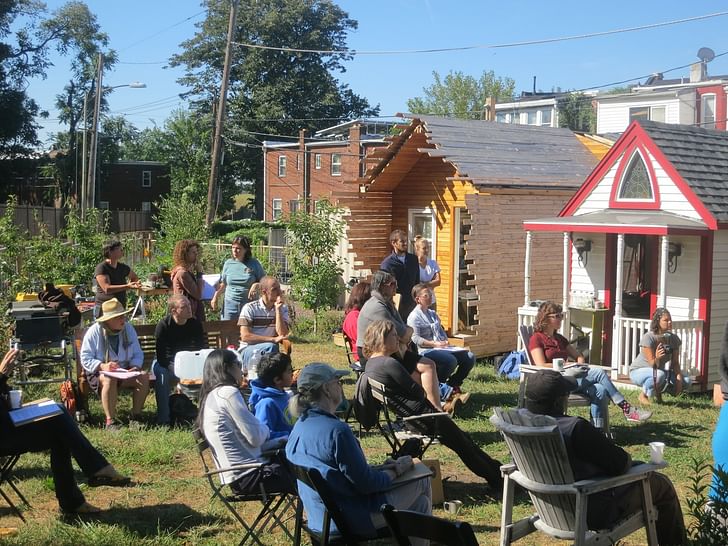
Workshops can open up architectural education to those beyond the university community, rolling theory and practice into concentrated and productive sessions. Prototyping, a new feature series on Archinect, will highlight some of the more ambitious and intriguing workshops out there, to show how they're being put together and what they produce.
Our inaugural issue of Prototyping features the Tiny House Design workshop, put on by Boneyard Studios in Washington, DC. The workshop is led by a geographer, architect, and builder, guiding participants through the design process of tiny houses -- single-room buildings designed for living. The Tiny House workshop is open to participants from all backgrounds, attracting those interested not only in design fundamentals, but in the tiny house lifestyle as well: one of unfettered efficiency and a small ecological footprint. In two days, workshoppers learn beginner drawing skills and take home the basic planning materials for building their own tiny house.
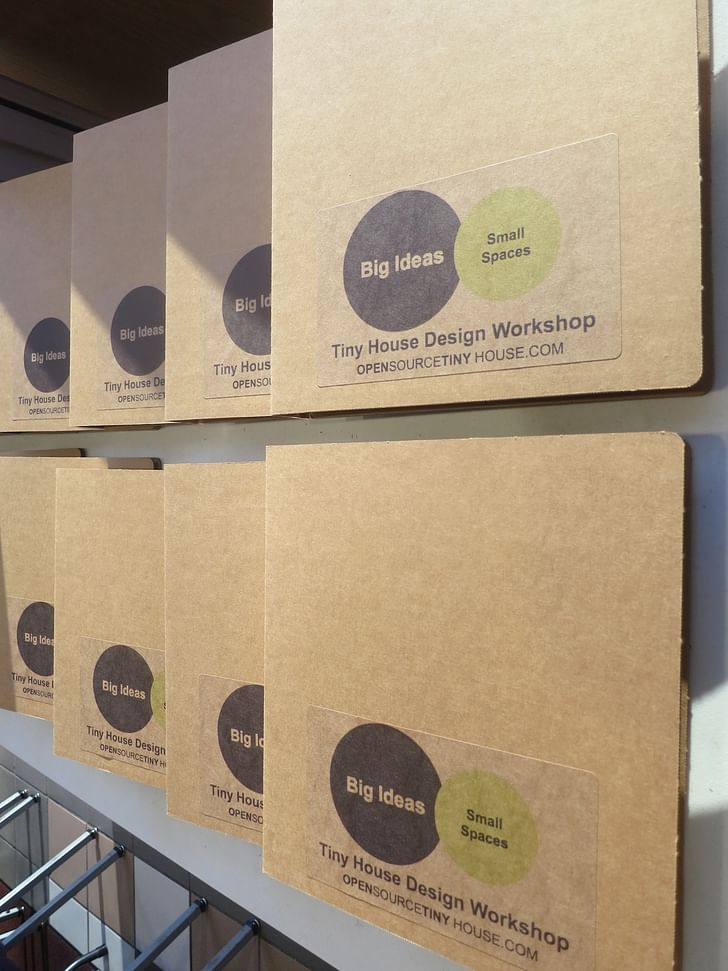
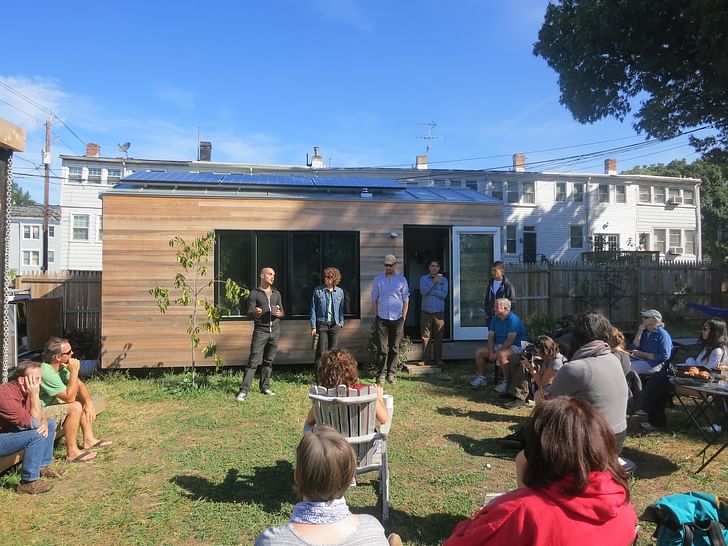
In the organizers' words, "we believe tiny house workshops should be like tiny houses: small, intimate, and designed to your individual needs." To that end, the weekend workshop is limited to 30 people to ensure that each person receives individual attention.
What you’ll get from the workshop:
View the basic workshop schedule here.


To gain a bit more perspective on the workshop, Archinect spoke with its organizers:
Lee Pera, the co-founder of Boneyard Studios is building a tiny house and organizes community work days on the Boneyard Studios lot. She is a geographer who specialized in community development, mapping, and land and zoning issues in both the U.S. and Latin America.
Tony Gilchriest, a builder with 10+ years experience has built a couple of tiny houses at Boneyard Studios in addition to numerous other traditional houses on the West Coast and East Coast.
Matt Battin, AIA, of Urban Density Lab, has designed and built a few tiny structures from the Miso house for the Solar Decatholon, an Airstream rehab, and the Pera House at Boneyard Studios, in addition to other large restaurant and residential projects. Matt also works as an architect for AECOM on FEMA projects in post-disaster areas.
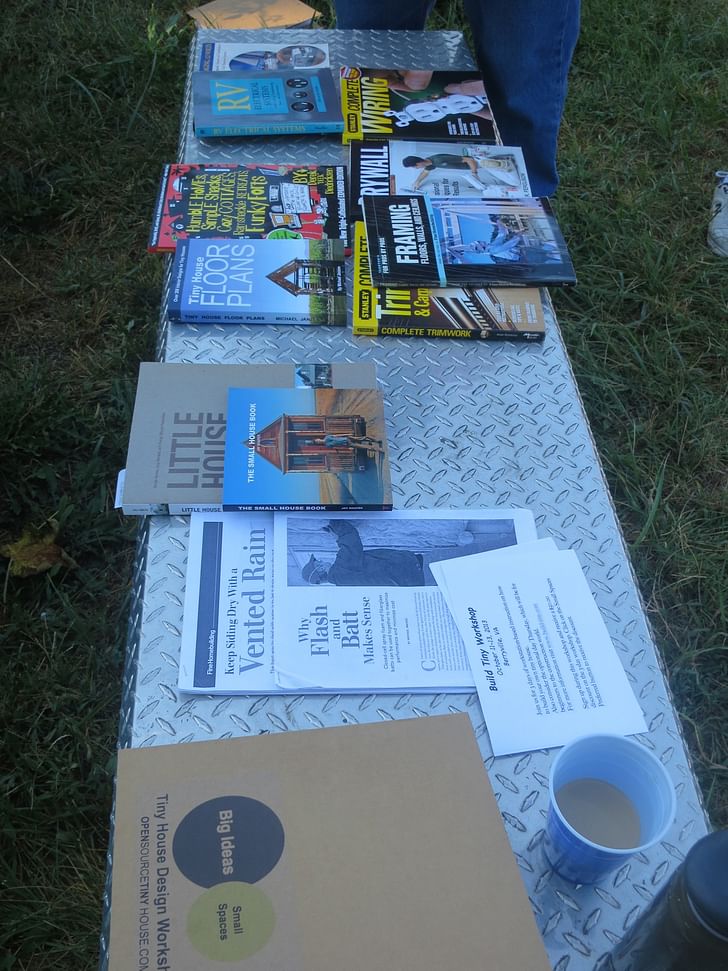
Here's what Lee, Tony and Matt had to say:
Describe your own architectural backgrounds, and your educational approach to workshops.
Lee Pera: I have no architectural background, but I do have a background in geography and urban/land-use planning. My approach to workshops is to create a fun and interactive space incorporating various teaching methods so that those with different learning styles have options.
Tony Gilchriest: I have no background in architecture other than discussions with friends who are architects, and also reading books, articles and watching documentaries about the subject. So I guess I've spent a fair amount of time casually thinking about design. I've also spent a lot of time remodeling houses which has given me a strong sense of what works, what doesn't in regards to livable, functional spaces. Being new to workshops my goal is simply to give people concise, easy to understand information that combines my experience as a general contractor with what I've learned over the past two years building and spending time in tiny houses.
Matt Battin: I am a licensed architect, and have taught design and building technology at the university level. I approach the workshops as a unique opportunity to interact with people who have a diverse level of design and building experience. It’s a lot of fun to see the excitement people have about alternative housing and building technology, and it serves as a way to talk about larger issues around housing beyond just the “tiny house”.

What inspired you to put on a Tiny House workshop?
LP: I was inspired to organize a tiny house workshop for others like myself - DIYers with little building or design experience. I had taken a tiny house workshop a couple years prior and had read a ton of tiny house blogs and books, but I found there to be a lack of technical information in many of those spaces since many of the blogs and workshops and books are written by other DIYers. I learned so much through working with professionals in the building and design industries on the houses at Boneyard Studios. We have all learned a lot from working on various tiny house projects, and I wanted others to be able to benefit from this knowledge and experience to help them better plan and design their own projects.
TG: After attending a tiny house workshop in 2012 and looking at what was available around the country with other workshops, I felt there was a lack of emphasis on design and insufficient coverage of some of the finer points regarding planning a build and the logistics involved in such an undertaking.
MB: I have never attended a tiny house workshop, which sort of makes me the odd one out. Tony and I spent a lot of time “teaching” while working with people at Lee’s work days on the BYS lot. It generated a series of conversations between the three of us about the need for building professionals and architects to be involved in the Tiny House movement. As we were building we started to track a series of questions that kept coming up, and it made us realize there topics that were not being addressed in the other workshops.
Describe the goals for the Tiny House workshop. Who are the ideal participants?
LP: The ideal participants are those who want to build a tiny house or are looking to learn more about small-space design for their current house or a future project. The workshop is also ideal for someone who wants a basic overview to building and designing as many of the concepts - learning how to plan a build project using a critical path approach - is applicable to any type of build project, not just tiny spaces. Other participants who may be interested are those in the urban development and affordable housing realm who would like to dive into exploring alternative building and designs for housing in urban areas.

What did you want participants to learn from the workshop?
LP: We want participants to learn how to plan a build project, learn how decisions during the process impact design and parts of the build, and learn the types of questions to ask during the planning and execution of the build. We designed the workshop to follow a critical path project plan for a tiny house build and incorporate design exercises and hands-on activities throughout it.
TG: I wanted to round out some of the more general tiny house topics with specific information such as material and labor costs and the amount of time involved in building a tiny house. I also wanted to give people a way to approach a complex and possibly overwhelming subject, how to design and build a house from scratch, with a way to break the project down into manageable chunks.
MB: I think the first thing we can offer is a chance for people to understand what a huge project a tiny house is, and how to evaluate if they are ready for that type of project. Do they tackle the project as a whole, or break it off into pieces, hiring out parts of the project. I don’t want us to be a DIY cheer squad, convincing people to take on more than they are able to do, or to build a house that is unhealthy or dangerous.
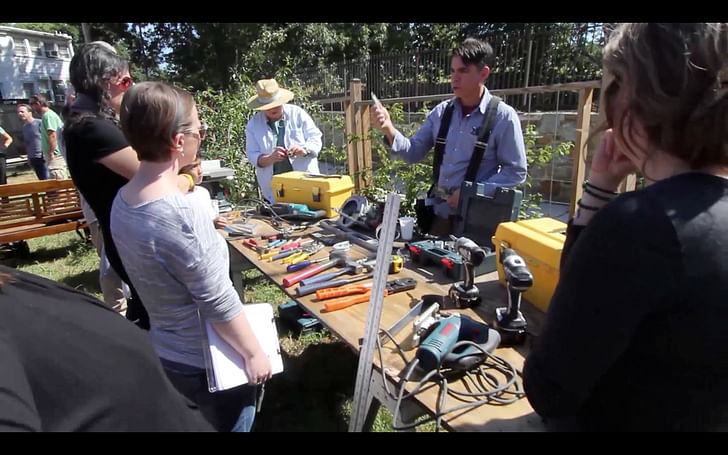
What difficulties did you have to deal with when planning / executing the workshop?
LP: Our first workshop last fall taught us a lot about how to break up the different components of a tiny house build/design. The most difficult piece of the workshop planning is trying to meet all participants' needs and cover a lot of diverse material in one weekend. Trying to assure everyone learns useful and relevant information to their diverse projects can a challenge. We've had professional builders in our workshop and folks with no building experience whatsoever.
TG: I agree.
MB: The workshop is an overview, as well as has a design and site visit component. We have a lot of content we want to cover, but in a fun and interesting way. Mix that with a really diverse group of people and it can be an intellectual circus of ideas, creativity, questions and conversations.
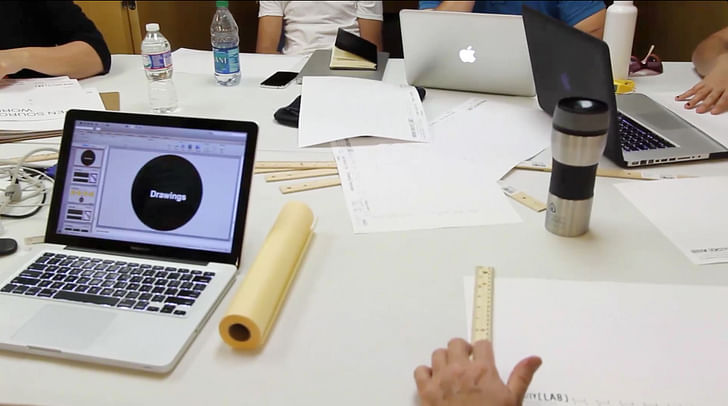
Do you plan to hold another Tiny House workshop? What would you change in future workshops?
LP: Yes, we plan on offering these a couple times a year. For our next workshop (March 29 and 30 in Washington, DC) we are planning more interactive, hands-on design sessions and focused break-out sessions/groups. That is the strength of our workshop - we have a great instructor to student ratio, so we can break out into smaller groups where participants can concentrate on what they would like to learn.
TG: We're also working to combine the three elements of a tiny house build - design, planning and construction - in a more integrative way that will tie all of these disparate subjects into a more cohesive whole.
MB: We have recently discussed some really exciting ideas of working with designing at full scale, and I am working on developing the that component for our March workshop. Scale can be difficult for even the most experienced designer to understand at ¼” or ½” drawings. I am excited that this will be both a great experience for students to understand the 1:1 scale of a tiny house, but also a great tool to take into their own projects.
Former Managing Editor and Podcast Co-Producer for Archinect. I write, go to the movies, walk around and listen to the radio. My interests revolve around cognitive urban theory, psycholinguistics and food.Currently freelancing. Be in touch through longhyphen@gmail.com
No Comments
Block this user
Are you sure you want to block this user and hide all related comments throughout the site?
Archinect
This is your first comment on Archinect. Your comment will be visible once approved.